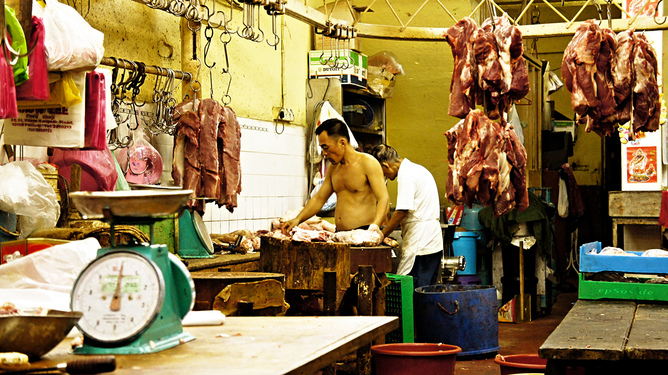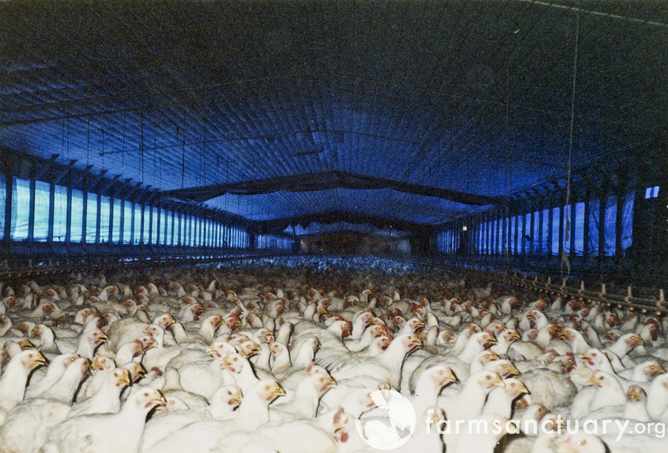We Don't Care About How Farm Animals Live, So Why Do We Care How They Die? (Op-Ed)


This article was originally published at The Conversation. The publication contributed the article to Live Science's Expert Voices: Op-Ed & Insights.
John Blackwell, the new head of the British Veterinary Association, recently waded into the ritual slaughter debate by calling for kosher and halal meat preparation to be banned.
With vets at European level making similar demands, 10 years after the then Labour Government decided not to ban the practice, Jewish and Muslim leaders have united in rejecting the basic assumption that the animals suffer greatly in the process. They have suggested that the objections are motivated by incipient anti-Semitism and Islamaphobia.
As an aside, the vets’ demands made a change from critics focusing solely on halal, which in view of the close similarities between the two practices always suggests it is socially easier to criticise Muslim rather than Jewish traditions. But that doesn’t mean the general point is correct either.
In either case, the objection is that a trained individual uses an extremely sharp implement to slit the animal’s throat in a single cut so that it bleeds to death within minutes. In other words, the problem is the animal being “conscious” at the final moment prior to slaughter.
Narrow definition
This raises a number of interesting issues. There is seemingly no interest in the other aspects of the slaughter process. Kosher and halal slaughterhouses are usually very small and non-industrial; most other abattoirs are highly industrialised. In the latter, the animals are carried off their feet from narrow pens to a point where a man uses a large nail gun to fire a pencil-sized bolt into their brains. Once stunned in this way, each animal is hoisted up and its throat is slit to bleed out.
Industrial slaughterhouses can process more than 300 animals an hour. Critics of kosher or halal practices rarely consider the distress animals might experience in the half hour before they die during industrial slaughter. So long as there is a “humane” death at the end, society and its veterinary associations are relatively relaxed about the overall system of industrial meat production.
Get the world’s most fascinating discoveries delivered straight to your inbox.
It might be harsh to suggest this is subtly disguised anti-Semitism or Islamaphobia, but it does point to a societal disquiet about non-standard production practices in this era where people are very removed from the physical production of food, especially meat. Industrialisation might add a level of distance and comfort, but learn a bit more about the meat production methods and you might also conclude that society’s squeamishness about animal killing does not extend to how the animal is reared, transported, penned and processed beforehand.
Speaking from experience
Anyone who has grown up on a farm will recognise a level of hypocrisy here. I grew up in rural parts of the US, catching, killing and cleaning fish. Shooting and cleaning deer was a part of life. A calf was taken each year to the small local abattoir for slaughter and we knew the name of the animal when we ate part of it.
My mother grew up in a world where they slaughtered hogs and steers on site by hand, with local families moving from farm to farm to help. At no point were they (or we) intentionally inhumane and we would all have been horrified by the assembly line and callous processing of animals in modern industrial slaughterhouses.
Likewise, there was no particular glory or superiority in the hands-on aspect of slaughter. Meat was an essential food and animals, which were known and cared for from birth, had been raised for that purpose. Slaughter was a very unpleasant and extremely difficult part of that process.
Kosher and halal rituals are very much rooted in religious practices embedded in that same type of rural culture. The killing is grubby and bloody; and uncomfortable for modern people used to meat in nice packages.
But it is problematic to focus on the distress of an animal at the moment of its death in a very small-scale, hands-on environment while turning a jaded and largely blind eye to slaughterhouses sucking in animals and spitting out meat parcels by their thousands every hour. If those who claim to care about animal rights want to focus on one thing, it should be that.
Related coverage:
- We already have the answers to humane religious slaughter
- Humane and human don’t mean the same thing when it comes to killing animals
William Naphy does not work for, consult to, own shares in or receive funding from any company or organisation that would benefit from this article, and has no relevant affiliations.
This article was originally published on The Conversation. Read the original article. The views expressed are those of the author and do not necessarily reflect the views of the publisher. This version of the article was originally published on Live Science.



